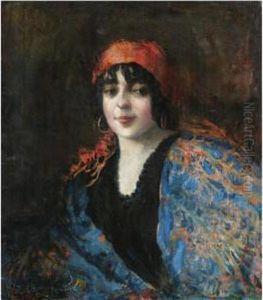Vasily Alexandrovich Zverev Paintings
Vasily Alexandrovich Zverev was a notable Russian artist, born on October 15, 1935, in the village of Malye Kibechi, in the Chuvash Autonomous Soviet Socialist Republic, part of the former Soviet Union. He was known for his distinct approach to landscape painting, still lifes, and portraiture, which earned him a place among the prominent artists of his time. Zverev's talent emerged early in his life, but he grew up during a period marked by political turmoil and the aftermath of World War II, which influenced his artistic development and the themes of his work.
Zverev's early life was not focused on formal artistic training. He spent his childhood in a rural environment, which later influenced his choice of subjects and his connection to nature. However, his artistic abilities did not go unnoticed, and he eventually moved to Moscow to further his education and art career. In Moscow, Zverev became associated with a group of artists that would later be known as the 'nonconformist' artists of the Soviet Union. These artists sought to break away from the restrictions of Socialist Realism, the state-mandated art style that dominated the Soviet Union's cultural landscape.
Throughout the 1950s and 1960s, Zverev developed his style, which was characterized by a spontaneous and expressive technique. His work often featured bold colors, dynamic brushstrokes, and a sense of movement that brought his subjects to life. Zverev's art was a form of personal and artistic freedom in the face of an oppressive regime, and as such, he faced challenges in exhibiting and selling his work. Despite this, he garnered a following among art collectors and fellow artists.
Zverev's life was marked by both his dedication to art and his struggle against the constraints of the Soviet system. His work was largely unrecognized by official Soviet art institutions, and he was not allowed to exhibit in major galleries or join the Union of Soviet Artists, which would have provided him with financial support and recognition. Nevertheless, Zverev's art found its way into private collections in Russia and abroad.
Vasily Zverev continued to paint until his later years, remaining true to his unique vision. He died on November 25, 1993, in Moscow, leaving behind a legacy of artistic independence and a body of work that continues to be appreciated for its emotional depth and expressive power. Today, Zverev's paintings are a testament to his talent and his commitment to his craft, embodying the spirit of an artist who sought to create freely in an unfree society.
